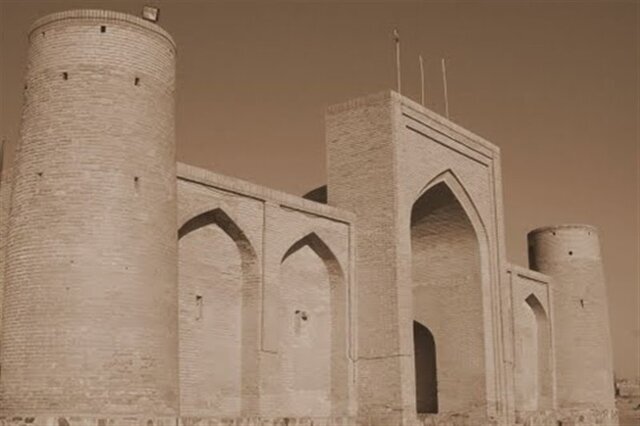Discover Damghan: A Hidden Gem for Cultural Travelers and History Buffs!
Discover the fascinating history and architectural wonders of Damghan, a city in Iran’s Semnan province that is a must-visit for cultural travelers and history buffs alike. Located approximately 350 kilometers east of Tehran, Damghan is renowned not only for its delectable pistachios—often referred to as “the smiling nuts”—but also for its impressive array of historical monuments, caravanserais, fortifications, and sacred sites that tell the stories of its glorious past.
A City of Mystics and Legends
The name Damghan is believed to derive from the ancient Persian word ‘Moghan’, which refers to practitioners of mystical arts, including astrology and alchemy. Originally called ‘Dah Moghan’, meaning “ten magi,” the name has evolved into its current form over the centuries.
Historically, Damghan has played a pivotal role along the Silk Roads, acting as an essential trading hub that connected Merv to the Mediterranean coast. It also served as a gateway to Hecatompylos, the Parthian capital that gained fame after the region was conquered following Alexander the Great’s fall.
Key Attractions in Damghan
- Tarikhaneh Mosque: Recognized as Iran’s oldest standing mosque, the Tarikhaneh Mosque dates back to the first century after the advent of Islam. Situated in the southeastern section of Damghan, it exemplifies pre-Seljuk Islamic architecture and showcases Sassanid-era construction methods.
- Tepe Hessar: An archaeological site located just outside the city, Tepe Hessar has unearthed layers of civilization dating back to the 5th millennium BC. Excavations reveal artifacts from the Medes, Achaemenids, and more, providing insights into the region’s extensive history.
- Ancient City Walls: Visitors can explore the remnants of Damghan’s ancient fortifications, which feature massive walls and battlements that were once wide enough for chariots, as noted in historical texts.
- Seljuk-era Architectural Jewels: The Seljuk era significantly enriched Damghan with remarkable structures, including the Shrine of Pir Alamdar and the Jame’ Mosque. These sites are renowned for their intricate brickwork and artistic craftsmanship.
- Chehel-Dokhtaran Vault: This family mausoleum, built in 1087, is famous for its exquisite brickwork and onion-shaped dome. It stands resilient against earthquakes, showcasing the artistry of the Seljuk period.
- Cheshmeh-Ali: Located about 30 kilometers north of Damghan, this scenic spring has served as a peaceful retreat for centuries. Its idyllic landscape inspired the construction of palatial structures during the Qajar era.
- Ismaili Fortresses: North of Damghan, two fortresses used by the Ismaili sect during medieval times, Gerdkuh Fortress and Mehrnegar Fortress, offer breathtaking views and insights into the strategic importance of these strongholds.
Tarikhaneh: The Oldest Mosque
The Tarikhaneh Mosque, a highlight of Damghan’s architectural heritage, features a spacious courtyard surrounded by porticos on three sides. Its 18-column gallery faces the Qibla, and the mosque’s Seljuk-era minaret is adorned with what is believed to be the oldest tile inscription in Islamic architecture. The name Tarikhaneh itself, a blend of the ancient Turkic word for “sky” or “god” and the Persian term for “house,” translates to “House of God.”
Tepe Hessar: An Archaeological Marvel
This archaeological site holds immense historical significance, revealing a timeline of civilization from the 5th millennium BC to the Parthian and Seleucid periods. Artifacts found here, some over 7,000 years old, provide a fascinating glimpse into the region’s ancient past.
Ancient Fortifications
The remnants of Damghan’s fortifications still stand, showcasing massive walls and battlements that once protected the city. Visitors can explore these ancient structures, which highlight the city’s defensive capabilities throughout history.
Seljuk Architecture in Damghan
During the Seljuk era, Damghan witnessed the construction of several remarkable buildings. Sites like the Shrine of Pir Alamdar and the Jame’ Mosque are testaments to the intricate designs and artistic achievements of that time. The Seljuks introduced ornate brickwork that transformed the architectural landscape of early Islamic structures.
The Resilient Chehel-Dokhtaran Vault
This family mausoleum, known as the “Vault of Forty Girls,” was constructed in 1087 and remarkably survived numerous earthquakes. Its stunning brickwork and inscriptions reflect the artistic excellence of the Seljuk era and serve as a historical landmark in Damghan.
Natural Beauty at Cheshmeh-Ali
Cheshmeh-Ali, a picturesque spring located about 30 kilometers from Damghan, has attracted visitors for generations. The scenic beauty of the area inspired the construction of various palatial structures during the Qajar dynasty, making it a popular destination for those seeking a blend of history and tranquility.
Ismaili Fortresses: A Glimpse into the Past
To the north of Damghan, the Gerdkuh and Mehrnegar Fortresses provide an insight into the strategic strongholds of the Ismaili sect during the medieval period. These fortifications, perched on rugged mountains, offer breathtaking views and a peek into the historical significance of the region.
In conclusion, Damghan is a captivating destination for anyone interested in exploring Iran’s rich history and architectural marvels. With its ancient structures, archaeological sites, and stunning natural landscapes, it promises an unforgettable experience for all who visit.






